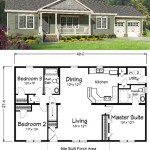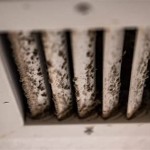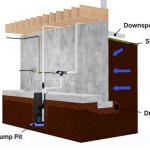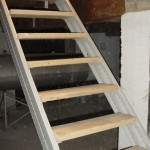What Is A French Drain Basement?
A French drain is a type of sub-surface drainage system that is used to redirect water away from a specific area. It is typically installed around the perimeter of a basement or crawlspace to prevent water from seeping in and causing damage. French drains are also used to drain water from yards, gardens, and other areas where water tends to accumulate.
A basement French drain is a trench that is dug around the perimeter of the basement, filled with gravel, and then covered with a perforated pipe. The gravel allows water to seep into the pipe, where it is then directed away from the basement. The perforated pipe is typically made of PVC or corrugated metal.
French drains are relatively simple to install, but they can be time-consuming. The first step is to dig a trench around the perimeter of the basement. The trench should be at least 6 inches wide and 12 inches deep. Once the trench is dug, it should be lined with a filter fabric to prevent dirt and debris from clogging the pipe.
The next step is to fill the trench with gravel. The gravel should be clean and free of debris. The gravel should be packed tightly into the trench, but it should not be compacted. Once the trench is filled with gravel, the perforated pipe should be laid on top of the gravel.
The perforated pipe should be connected to a drainpipe that leads away from the basement. The drainpipe should be sloped so that water can flow freely away from the basement. The drainpipe should also be connected to a sump pump, which will pump water out of the basement if the water level rises too high.
French drains are an effective way to prevent water from seeping into a basement. They are relatively simple to install, but they can be time-consuming. If you are considering installing a French drain in your basement, you should contact a qualified contractor.
Benefits of a French Drain Basement
There are many benefits to installing a French drain basement. Some of the benefits include:
- Prevents water from seeping into the basement
- Protects the basement from flooding
- Reduces the risk of mold and mildew growth
- Improves the air quality in the basement
- Makes the basement more comfortable and livable
Drawbacks of a French Drain Basement
There are also some drawbacks to installing a French drain basement. Some of the drawbacks include:
- Can be time-consuming and expensive to install
- May require digging up the yard around the basement
- May not be effective in all cases
Is a French Drain Basement Right for You?
Whether or not a French drain basement is right for you depends on a number of factors, including the climate in your area, the condition of your basement, and your budget.
If you are considering installing a French drain basement, you should contact a qualified contractor to get an estimate. The contractor will be able to assess your needs and determine if a French drain is the right solution for you.

French Drain Vs Waterguard Interior Drainage System

Is A French Drain The Solution For Wet Crawl Space Seattle Times

Basement Sump Pump French Drain Installation Basements Love Us

Footing Drain Interior French Pros And Cons Sani Tred

French Drain Installation Ny And Pa 877 885 2268 Vulcan Basement Waterproofing

A Guide To French Drains

French Drain For A Basement Toms River Patch

Basement Drain Tile And French Drains Explained Jes Foundation Repair

French Drains Installation In Napolis Central Na

A Quick Guide To French Drain Basement Waterproofing
Related Posts







